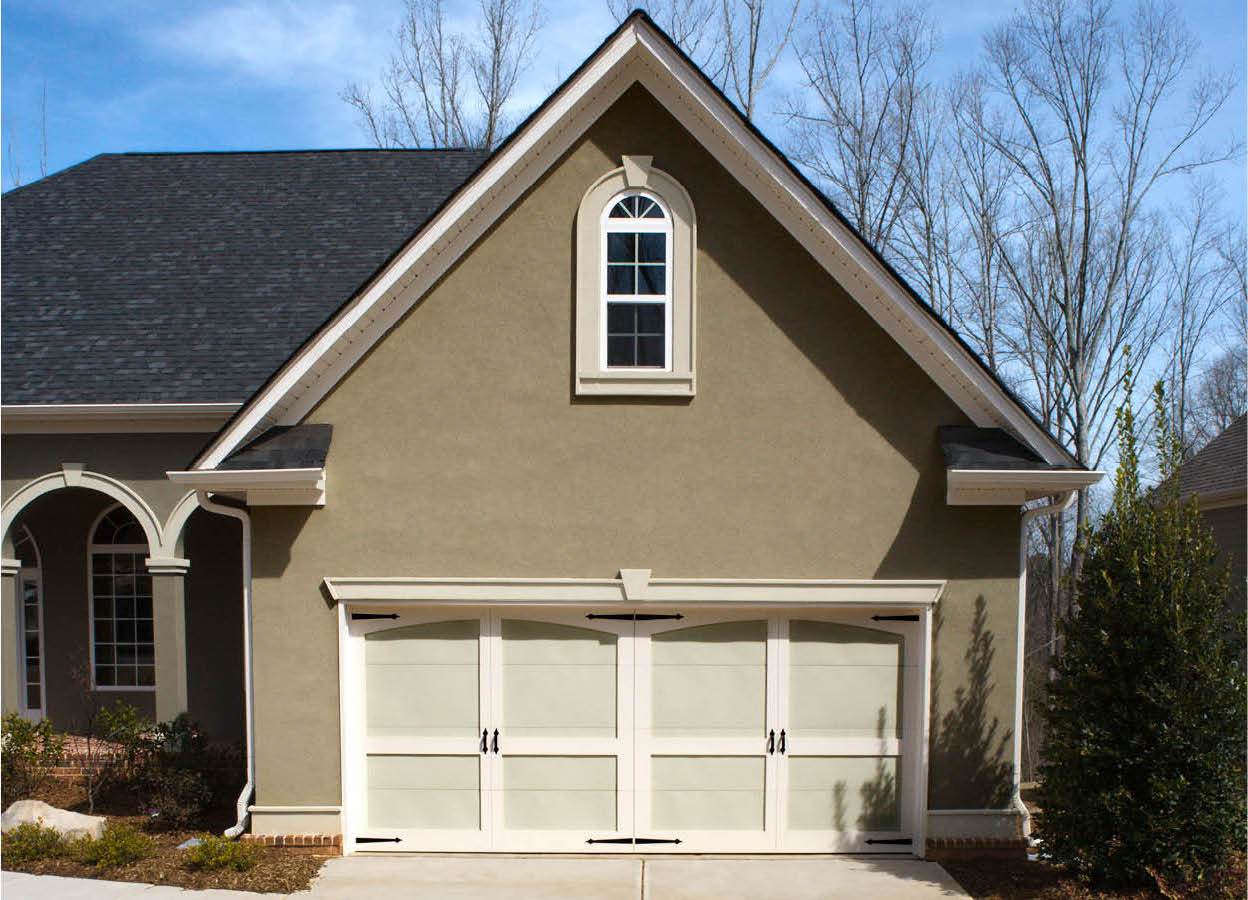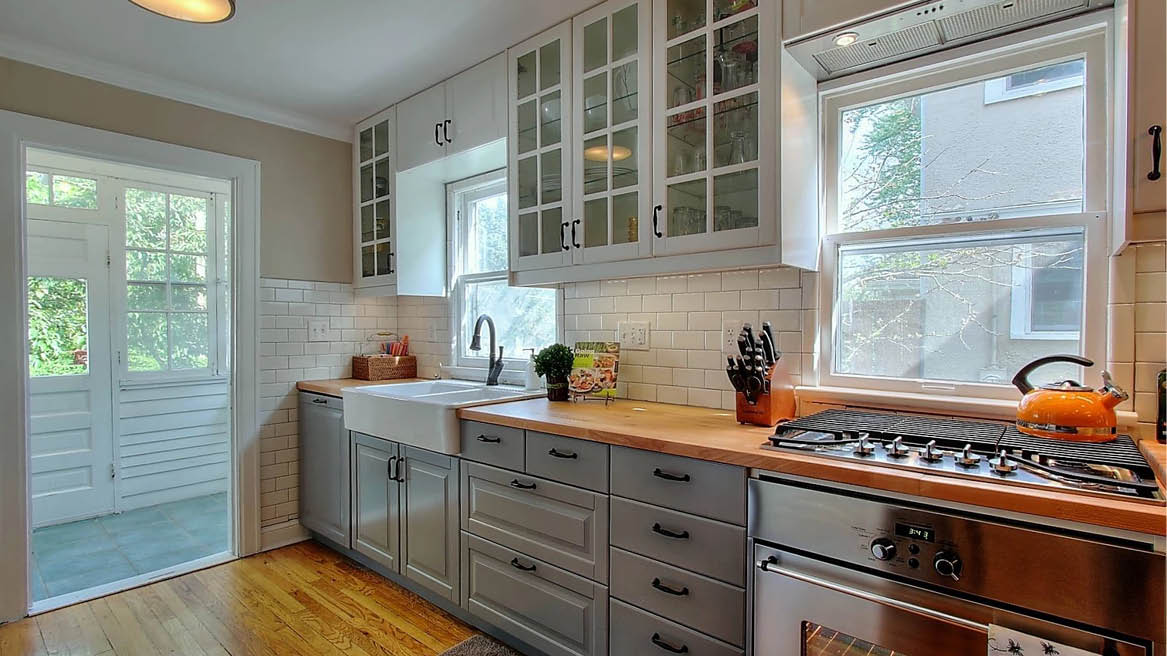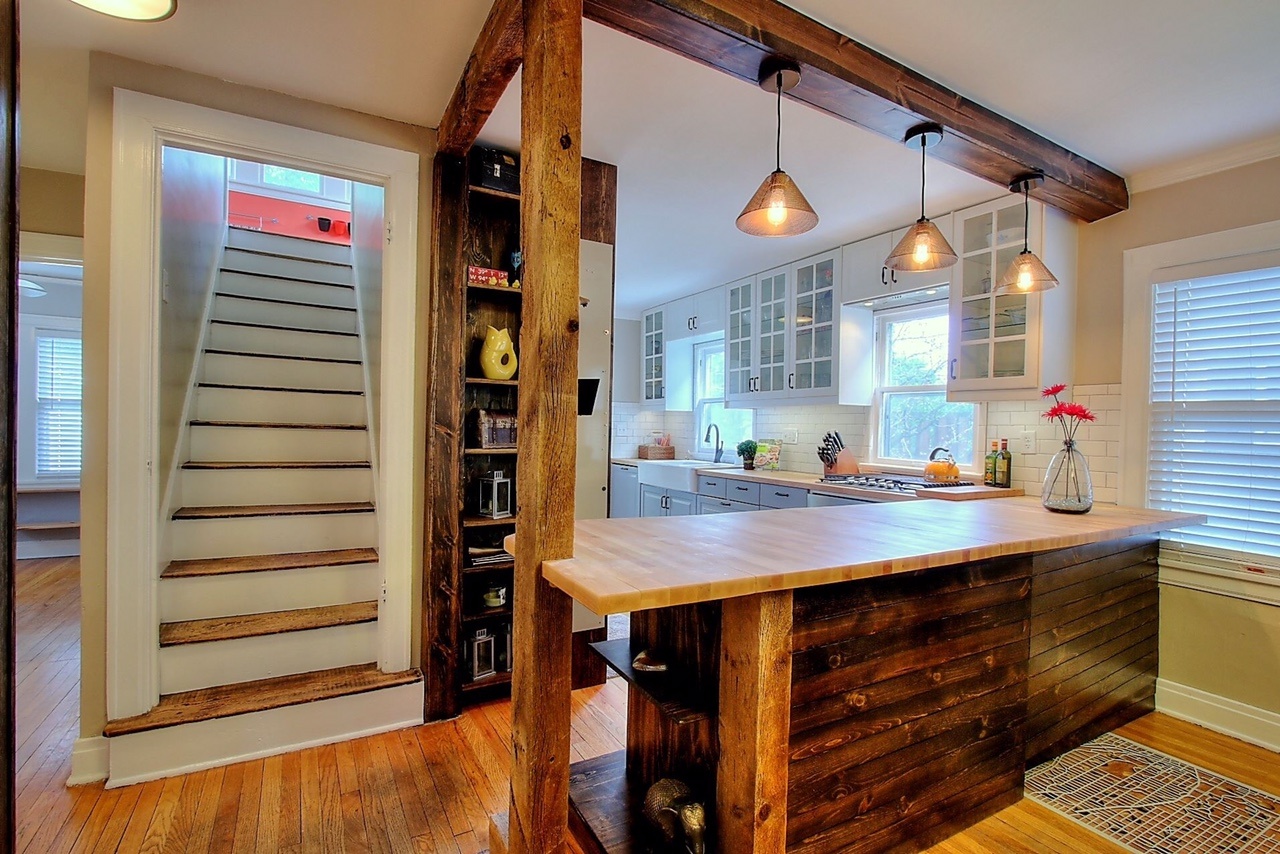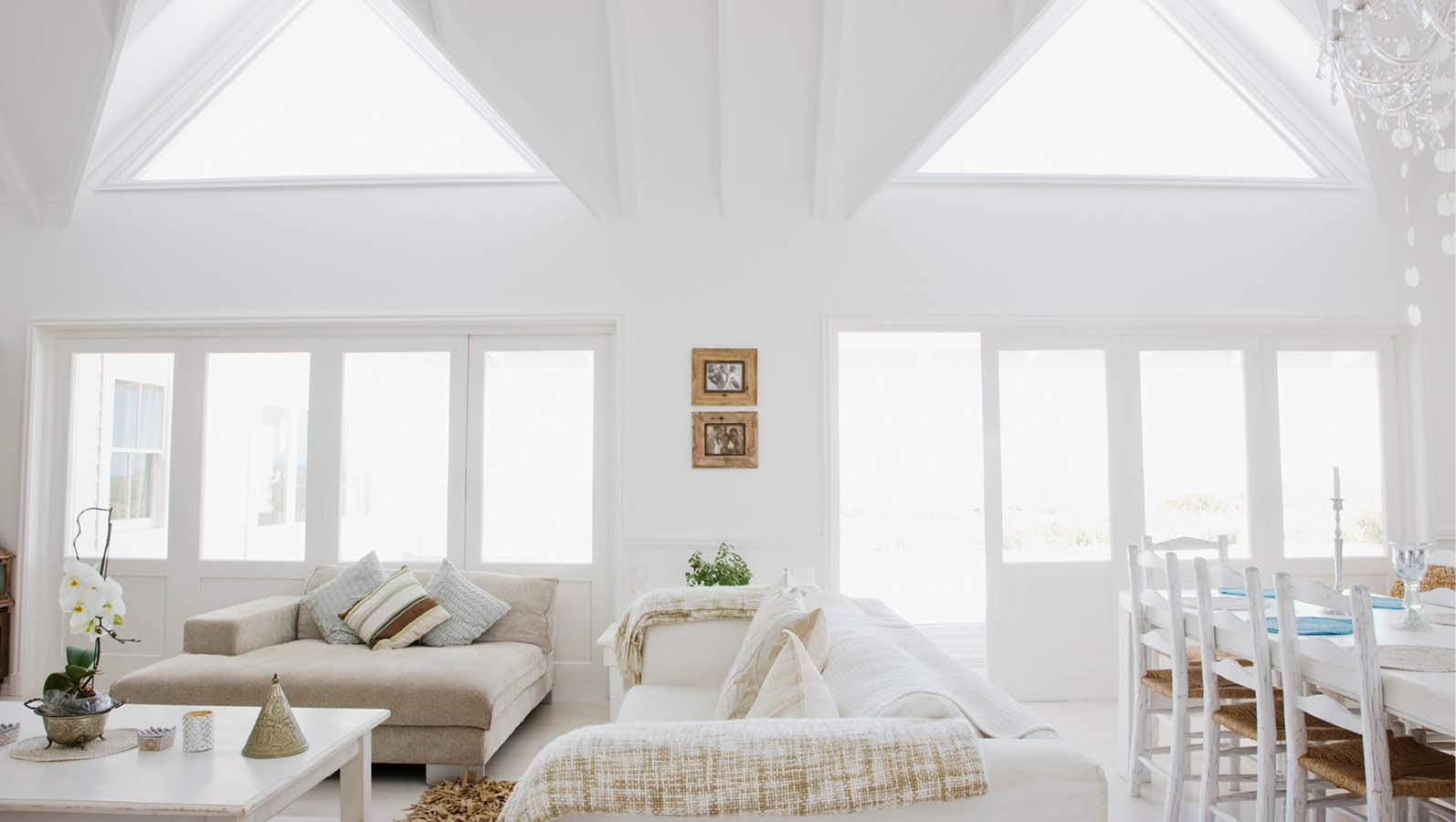Whether you are looking at something as simple as de-cluttering your home, or are about to embark on a full-blown kitchen remodel, it’s good to know the basics of Home Improvement Essentials in Denver.
Table of Contents
- Determine the best ROI
- Budgeting for your Home Improvement
- Be Honest with Yourself Before You DIY
- Custom Furniture and Beyond
- How to Cut Costs Along the Way
- Best Home Improvement Stores
Highest ROI Projects in Denver
According to a survey of 1,000 millennials by Business Insider, these were the top 10 things millennials wanted in a home:
- New appliances
- Large master bedroom
- 2-car garage
- Solar panels / energy storage
- Luxury kitchen
- Solid hardwood / stone flooring
- Finished basement
- Smart home system
- Above-average neighborhood
- Outdoor Deck (on the first floor)
The least popular upgrade for millennials was an above-ground pool.
Each year, Remodeling Magazine conducts a cost-versus-value analysis to determine which of the 29 home projects offers the best return on investment. This year, the top 3 home improvements might surprise you. Short on sexy but long on functionality and appeal, homeowner opted for lower cost projects that provided big returns. Here are some of the top mid-range projects in Denver for 2020:
Mid-Range Project Type in Denver |
Cost Recouped |
Project Cost |
| 1. Garage Door Replacement | 116% | $3,676 |
| 2. Manufactured Stone Veneer | 113% | $9,416 |
| 3. Window Replacement (wood), (vinyl) | 99%, 90% | $21,102, $17,332 |
| 4. Minor Kitchen Remodel | 97% | $22,665 |
| 5. Deck Addition (wood) | 93% | $13,459 |
| 6. Siding Replacement (fiber-cement), (vinyl) | 93%,90% | $16,352, $13,806 |
| 7. Roof Replacement (asphalt shingles) | 88% | $23,188 |
| 8. Bath Remodel | 79% | $20,664 |
| 9. Entry door | 75% | $1,838 |
| 10. Major Kitchen Remodel | 75% | $66,621 |
#1 Garage Door Replacement

It may not have the most pizazz, but the first most affordable item with most recouped investment on Remodel Magazine’s list is a garage door replacement. At $1,700, the cost vs. value report specifies these steps to your ROI:
- Remove and dispose of existing 16×7-foot garage door and tracks
- Install new 4-section garage door on new galvanized steel tracks
- Reuse existing motorized opener
- New door is uninsulated, single layer, embossed steel with two coats of baked-on paint, galvanized steel hinges, and nylon rollers
- Door has a 10-year limited warranty
#2 Manufactured Stone Veneer
According to Remodeling Magazine’s value report for 2020, this unlikely choice proves the exterior of your home and curb appeal count for more than you think. Adding a manufactured stone veneer to the outside of your home comes in at the second best for ROI. In Denver, there is a whopping 113% return for your money on this upgrade. By removing a 300 square foot section of siding from the bottom third of the street facing facade and replacing it with stone veneer will cost around $9,416.
#3 Window Replacement
Partly to save on energy costs, partly to update an otherwise dated home, it’s no wonder replacement windows score high among preferred home improvement projects. The U.S. Department of Energy estimates that you can save between $126 to $465 a year by replacing single-pane windows in your home. While those savings aren’t astronomical, new windows go a long way in bringing new life to an older home. By swapping out dated windows in rooms where you spend much of your time (i.e. kitchen and living room), you can turn a tired space into a vibrant gathering area.
#4 Minor Kitchen Remodel
Since you end up spending much of your time here, the kitchen is still a favorite of homeowners to improve. If you are going to do just one project, and have a budget of at least $5,000, it is frequently recommended to spend it on updating the kitchen. For this singular project, update the appliances, flooring, counter tops, paint the walls, and update the hardware. (See our guide to a modern kitchen remodel, for more in-depth insights).
According to Remodeling Magazine, a “minor” kitchen remodel of $22,665 in Denver has a whopping 97% cost recoup in 2020. For a functional but dated 200-square-foot kitchen with 30 linear feet of cabinetry and countertops, steps to this remodel include:
- leave cabinet boxes in place but replace fronts with new shaker-style wood panels and drawer fronts, including new hardware.
- Replace cooktop/oven range and slide-in refrigerator with new energy-efficient models.
- Replace laminate countertops with granite, quartz, soapstone, limestone or marble.
- Install mid-priced sink and faucet.
- Add new resilient flooring.
- Finish with painted walls, trim, and ceiling.
According to Consumer Reports, upgrades to a kitchen can yield a 3 to 7 percent bump in sales price. “Quartz” and “Stainless Steel” are buzzwords that don’t seem to be going out of style anytime soon.
DEFINITION OF QUARTZ: “Engineered from stone chips, resins, and pigments, quartz has started to challenge granite and marble as the go-to material in higher-end kitchens. It shrugged off heat, scratches, cuts, and stains in our tests, and it requires none of the upkeep of comparably priced natural stones. Expect to spend $40 to $100 per square foot, installed.” – Consumer Reports

Photo: Home remodel by One84
#5 Wood Deck Addition
Rounding out the top 5 of best home improvements are a wood deck addition (cost of $13,459 for a 16×20 foot addition). This project certainly makes sense in Denver’s semi-arid climate, which produces low humidity and ample sunshine. It’s not unusual for Denverites to make use their decks in the dead of winter, grilling steaks and reveling in the crisp air. You can always add an outdoor heating system or stainless steel propane patio heater to generate some warm temps on those chilly evenings.
#6 Siding Replacement
You choose the style and color, but the best part? You never have to paint again. Many vinyl sidings these days offer “fade-resistant finishes and transferable lifetime warranties,” according to HouseLogic. Fiber-cement siding also can pay off in terms of look and quality but does cost a bit more. Upgrading to insulated vinyl can also be a good choice when it comes to keeping the temperature of the home regulated.
#7 Roof Replacement
When it comes time to buy or sell a home, probably the most scrutinzed part of the house is the roof. According to Home Advisor, there is a huge range for roofing costs. From $4,000-$5,000 for a 1,000 square foot house to over $16,000 for a home larger than 3,000 square feet, it’s important to get several bids before replacing a roof. Furthermore, costs for roof replacement tend to be higher in Denver due to the frequent hailstorms that plague the city and its surrounding areas.
#8 Bathroom Remodel
Its common knowledge that kitchens and bathrooms sell a home. Home buyers continue to value updated bathrooms as evidenced by its position in the top 10. A well-appointed bathroom featuring new fixtures, solid continuous surface on the vanity and ceramic floor tile are just a few of the items that home buyers are expecting to find in their home search.
#9 Entry Door Replacement
This low-cost project helps your curb appeal and seal the deal on that awesome first-impression with future home buyers. For under $2,000, you can make a huge impact and increase your curb appeal dramatically.
#10 Major Kitchen Remodel
A big ticket item but one you will enjoy for years, a major kitchen remodel is the prize of home renovation projects. Since most people spend the majority of their time in or near the kitchen, it’s understandable why this room garners so much attention. By replacing cabinets, appliances, lighting and flooring, you can quickly turn your home into a masterpiece. The hard part is relying on microwave dinners and using the laundry room sink while the space is under construction!
Home Improvement Budgeting 101
Jumping into a renovation project without setting a budget first can get you into all sorts of trouble. You want to be sure you’ll get paid back for what you spend if you decide to sell your home later on. Talking to your Usaj Realty realtor can also help you make this choice, since each neighborhood’s priorities and payoffs will vary slightly.
CNN Money recommends spending no more on a home’s room than the percentage of what it is worth in comparison to the rest of the house. So for example, a kitchen is typically worth 10% – 15% of the entire home’s value. So if your home is worth $300,000 your kitchen budget should not surpass $30,000 to $45,000. The rest of the rooms are as follows:
- Master bathroom Suite: 10% of the house’s value
- Powder room or bathroom: 5% of the house’s value
- Finished attic or basement: 10% – 15% of the house’s value
- Other rooms: 1% to 3% of the house’s value
- Outdoor spaces: 2% to 5% of the house’s value
These percentages can be thought of as guidelines, but if you have a master bedroom you hate spending time in or a second bedroom that is in dire need of updates, it can be smart to focus on those first, especially if you plan on staying in the home for the foreseeable future.
Budget for labor: major plumbing and electrical, structural changes, replacing windows, installing cabinets, and replacing siding or the roof will need to be done by a professional.
According to architect Doug Walter of Doug Walter Architects, you don’t want to waste time working with people who don’t have experience. Work with reputable contractors, architects and interior designers who can guide you through the process. It will ultimately end up saving you time and money. If the price seems too good to be true, it probably is.
Once you have defined everything that you want, ideally you can set aside enough cash for each project. If a home equity loan or refinanced mortgage is the only way you can go, sit down and go over your finances and see how much of a monthly payment you’ll be able to afford. Check out a recently published guide, “How this FHA loan can help you repair your home,” by Bankrate.com.
Next, head to local home improvement stores and get pricing for everything you need. Get estimates from the professionals you plan to use. Write everything down and then compile it into a budget that includes:
- Labor (for any contractors you are using)
- Tools, your time and equipment (if you are doing the job yourself)
- Any lodging/entertainment costs you may accrue if you and your family have to be elsewhere while paint dries, work is done, etc.
- Materials
- Permits
- Cleanup
Depending on the contractor you use, you may be able to buy materials yourself or use salvaged materials (like we mentioned before, from Habitat ReStore). A good rule of thumb can be to add a 20% to 30% margin of error to your budget (particularly for remodels) to be safe in accounting for unexpected turbulence along the way (HowStuffWorks).
Be Honest with Yourself Before You DIY
Be real with yourself about your skill level. The last thing you need when trying to stay within your budget is to go overboard and get in over your head. Do an inventory of the tools you own before you decide to go down the DIY path. If you feel prepared skill-wise but just don’t have the tools, a great resource can be the Denver Tool Library, which only charges $80 a year for tool rentals.
Sit down and compare the cost of doing it yourself vs. hiring a professional contractor. What is your time worth to you? Do you feel comfortable using the tools required or is an injury likely? When getting a quote from a professional, ask for the quote to have materials and labor separated so you can see the precise costs. Factor in the cost of any tools you would buy.
Start with the easiest projects (and ones that qualify for a do-over) if you want to do it yourself. Painting is a great place to start if you are a newbie to home improvement!
The Skinny on Permits
Do do you need a building permit? If you are planning on changing the bones of your home, for example knocking down a wall or adding a deck, you might need a permit prior to begin the project. Depending on the scope of the project and your experience in construction, it might be beneficial to reach out to a professional contractor who can assist you with navigating the application process.
Custom Furniture and Beyond
From heated floors, to pine-beetle kill furniture, to custom Denver-made artwork and wood works, the sky is the limit on your home improvement options. Whether you have an unconventionally sized nook in your kitchen and need a custom bench built, or you desire the finer things in life (like a heated driveway), the amount of upgrades you make all really depends on your budget.
The benefits and possibilities of customizing a space are endless. One84‘s creator Casey Roberts says: “Furniture designed to fit the unique spaces and character of your home can be a great way to express your personal style. A custom designed piece allows you to shape your space to be the best it can be and really optimize the square footage. One size does not fit all when designing a space and it really comes down to what is important to you and how you spend your time. Do you look to host friends? Or how about just have a cozy spot to read a book?” One84 is a custom wood-working company here in Denver, CO. They create custom wood furniture, artwork, and more to really bring out the best of a space.

Remodeled kitchen by One84: Custom island front and built-in shelves
How To Cut Costs Along the Way
We sat down with Doug Walter of Doug Walter Architects for our special series on home improvement to get this answer. Walter suggested the following:
- Group as many small projects together into one larger project to attract the interest of the contractor and to cut costs.
- “Stack the deck”: If you are putting on an addition, for sure put a full basement under it, and consider a second story over it.
- Ask your contractor which products you can shop for and supply on your own (e.g tile, light fixtures and plumbing fixtures). Shop the big box stores, the internet and independent vendors to find the best deal. There is a great advantage to buying local, as it’s easier to replace any defective product. Try the Habitat’s Restore.
- Buy name brand products and don’t shop only on price. Research your choices online looking for consumer reviews. All countertop fabricators have “boneyards” out back, with partial slabs of granite, marble and quartz left over from prior jobs. These are available at a considerable discount.
- Compromise where you can. Ask yourself if you really need that tub or if a nice shower can suffice.
The 3 Best Home Improvement Stores in (or near) Denver
- Habitat Restore: Great for cabinets, appliances, furniture and more. All profits support Habitat for Humanity’s home ownership program for low income families.
- Bud’s Warehouse: As a not-for-profit job-training program, Bud’s Warehouse offers over 30,000 sq. ft. of new and antique home improvement supplies – all donated by area contractors, builders, suppliers and homeowners — all at savings of up to 70% off retail.
- ReSource: ReSource is Resource Central’s retail facility for reclaimed materials. Located in Boulder, Colo., ReSource offers gently used, donor-sourced construction and building materials at affordable prices.




